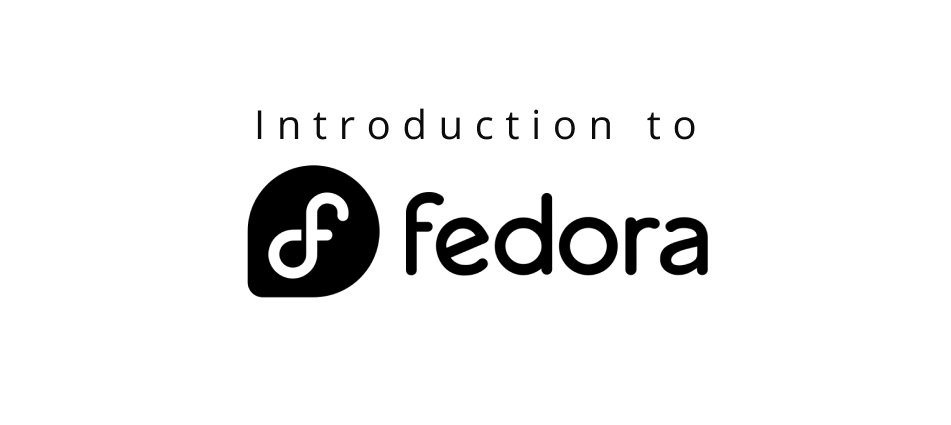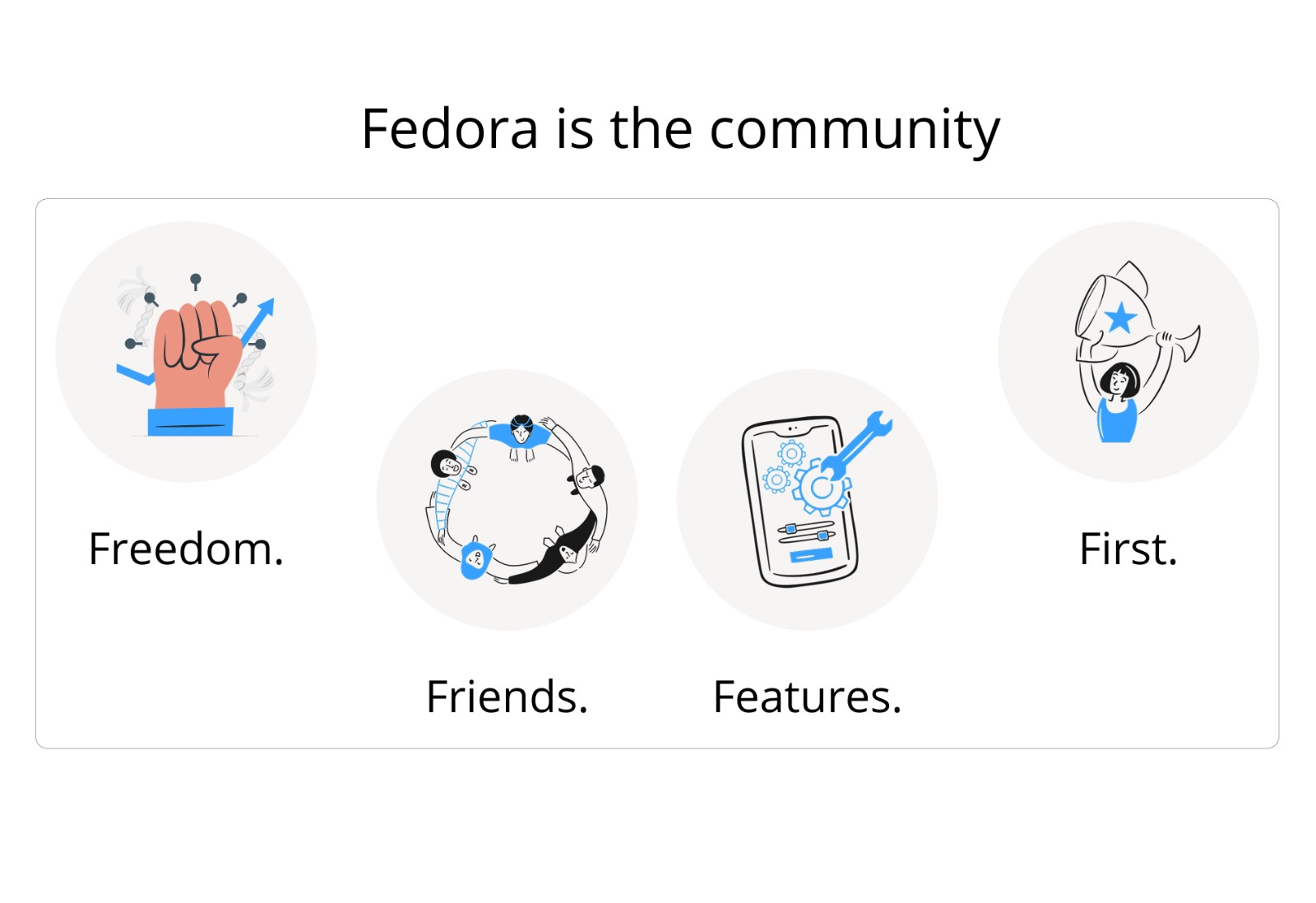Introduction to Fedora
 Etugbo Judith
Etugbo Judith
This article introduces the Fedora Project, Fedora Linux, and the Fedora community. The goal is to help future Outreachy applicants understand Fedora’s core ideas while sharing my personal journey and what I have learned about Fedora during the contribution phase of the internship.
Key Concepts
Before reading further, you need to understand the following terms:
Free and Open Source Software(FOSS): It refers to a software that is available for anyone to use, modify, and distribute freely. The term free in FOSS emphasizes the freedom to use, modify, and share. Open-source means the code is publicly available for anyone to inspect or improve. An example of FOSS software is Linux, which is built by communities worldwide rather than corporate organizations.
Linux: It is an operating system like Windows or MacOS that runs on computers, phones, servers, and more. Because of its open source nature, anyone can use, modify, and improve it.
Linux Distribution: A Linux distribution is like a pre-prepared party package that includes everything you need to have a complete and functional operating system without doing all the groundwork yourself. These distributions are built on the Linux Kernel. They are called distributions because they assemble and package various software components and other utilities into a cohesive operating system.
Distribution: The term distribution refers to the act of collecting, compiling, and providing these software components as a complete operating system.
What is Fedora?
The name Fedora has a few connected meanings. Generally, it refers to the Fedora Project, a collaborative open source initiative, or the Fedora Linux operating system. The name traces back to 2002, when Warren Togami, a student at the University of Hawaii, started Fedora Linux as a volunteer effort. His goal was to create a central repository for reliable, pre-tested third-party software that worked smoothly with Red Hat Linux, a popular operating system at the time.
Over time, Red Hat, a company known for its enterprise software, adopted the Fedora name, turning it into a trademark. Today, Fedora is known for prioritizing innovation, often introducing new technologies earlier than other systems.
Fedora works directly with upstream developers, i.e the original creators of tools used in Linux, to ensure improvements that benefit everyone. This collaborative approach makes Fedora stand out and keeps it at the forefront of open source development while supporting the broader Linux community.
Source: Wikipedia
Fedora Linux
Fedora Linux is a Linux distribution. It is a free, open source operating system(OS) developed by the Fedora Project, a community of volunteers, individual contributors, and Red Hat employees. The OS was originally launched in 2003 to continue the legacy of Red Hat Linux after it shifted focus to its enterprise product, Red Hat Enterprise Linux (RHEL).
Today, Fedora focuses on innovation, using the latest open source tools while staying free and open for everyone.
How does Fedora work with other systems? It acts as a testing ground for new ideas. It currently serves as the starting point for different Linux distributions like CentOS Stream and RHEL. This means new features are tested on Fedora before moving to those systems.
Fedora follows a structured release cycle to maintain this balance of innovation and usability. It releases a new version within six months, with each release supported for at least 13 months, giving users enough time to upgrade without pressure. Upgrading is simple and requires no system reinstallation, simplifying the process and saving time.
Fedora also caters to diverse needs through tailored editions. Examples of these editions include:
The Fedora workstation designed for personal computers and offers a user-friendly interface for daily tasks.
The Fedora server supports enterprise applications and web services.
The Fedora Internet of Things (IoT) powers smart devices like sensors and gadgets.
The Fedora CoreOS specializes in cloud computing and container workflows.
The Fedora Labs provide pre-configured tools for niche tasks like scientific research or creative projects.
These are just a few examples from the Fedora edition list. You can read more here.
Fedora Project
This is the community driven organization that develops the Fedora Linux distribution. It comprises a global community of developers, volunteers, and Red Hat employees. Red Hat primarily sponsors the Fedora project, which is governed by bodies like the Fedora Council and the Fedora Engineering Steering Committee(FESCo). The Fedora project focuses on innovation and works closely with upstream Linux communities.
Learn more about the Fedora Council and FESC here
The Fedora Community
The Fedora community is large and diverse, with developers, designers, writers, testers, translators, and users worldwide. It is a place where ideas come to life, with room for everyone to contribute regardless of their experience level. The Fedora community promotes inclusivity, diversity, and equity, which builds on one of the four foundations of Fedora(Friends).
Here is how to get involved:
Communication Channels: Real-time chat for questions and help.
Forums: Online discussions to share ideas and connect.
Key things to remember:
The Fedora Project is the team or community that builds the product. The community comprises individuals with various skill sets worldwide, including Red Hat employees.
Fedora Linux is the actual product (the operating system) that the Fedora Project builds and
The name Fedora refers to the Project and the product (Fedora Linux), which also has historical and trademark significance.
Why Does Fedora Matter?
Fedora exists to provide a free, adaptable operating system that prioritizes innovation and user freedom. It gives people from all walks of life opportunities to work on meaningful projects that impact millions, from casual users to enterprise systems.
What makes Fedora unique is its balance of cutting-edge tools and stability. For example, new features often debut here before reaching other Linux distributions, making it a playground for experimentation. This focus on innovation attracts professionals and people from different backgrounds. However, what truly sets Fedora apart is the community.
Fedora is built on four foundations. First, there is freedom; everything they create is open source and free. Second, they value friends, and the community comes first. Everyone is welcome, no matter your skill set. Third, Fedora prioritizes features. They push boundaries, continuously integrating the latest technology.

Photo by Judith Etugbo
Lastly, the project focuses on being first. This means Fedora often adopts new tools before anyone else.
For me, the Friends Foundation makes Fedora feel like coming home. It is knowing that if you are stuck on a problem, there is someone, somewhere, willing to lend a hand, regardless of whether you are a seasoned coder or a complete beginner. It fosters a welcoming and supportive environment open to everyone, irrespective of their skills or background.
My Personal Experience
I was pumped with joy when I learned that my initial application with Outreachy had been approved. The excitement faded when I started searching for projects matching my skills and found Fedora. As I read through the project description, certain thoughts ran through my mind: How do I make the most of this opportunity? This thought left me with a series of overwhelming thoughts, which, in my opinion, is a usual state for anyone.
Moving on, I took a bold step and typed Fedora into my search engine. As a technical writer, I use this method to find information, research, and learn about a product or new technology. This led me to the official documentation and other online resources.
At first, I felt overwhelmed with the information I found, which is normal for everyone. However, the historical view and current exploits of the Fedora project contain elements that make it worth the effort. Learning how a student project from 2002 evolved into a global open-source force showed me that every contributor, regardless of experience, has a role here.
For Outreachy applicants, engaging with Fedora means more than building technical skills. It's about joining a community that values curiosity, collaboration, and growth. Understanding Fedora’s goals will shape your mindset about your contributions, that no matter how small it is, it helps sustain a system that prioritizes people over profit.
Advice for Future Applicants
If you are reading this as a future Outreachy applicant, know that you have got this.
Let me share a few tips that will help you on your journey. Firstly, join the Fedora community through its various communication channels, such as Matrix. Don't be shy about asking questions. The Fedora community is welcoming and full of people who genuinely want to help you succeed.
Secondly, remember to start small. Don't try to learn everything all at once. Instead, focus on an area that interests you. Beyond that, keep an open mind and be willing to learn new things. Fedora is a great place to expand your knowledge of open-source software and Linux and get hands-on experience.
Thirdly, take it slow and ask for help; do not feel intimidated or pressured. Fedora’s community has your back. Three days in, I’m already pushing through. If I could push through, so can you.
More importantly, don't forget to explore the Fedora documentation. It contains a wealth of information to help you get started, but be mindful not to overwhelm yourself. Take it one step at a time, and you will be amazed at what you can achieve.
I put together some referenced resources to help you understand Fedora. I hope you find them helpful.
If you enjoyed reading my article, don’t forget to like, comment and share it with your friends.
Subscribe to my newsletter
Read articles from Etugbo Judith directly inside your inbox. Subscribe to the newsletter, and don't miss out.
Written by

Etugbo Judith
Etugbo Judith
I'm a Technical writer passionate about breaking down complex concepts into clear, concise and engaging content.